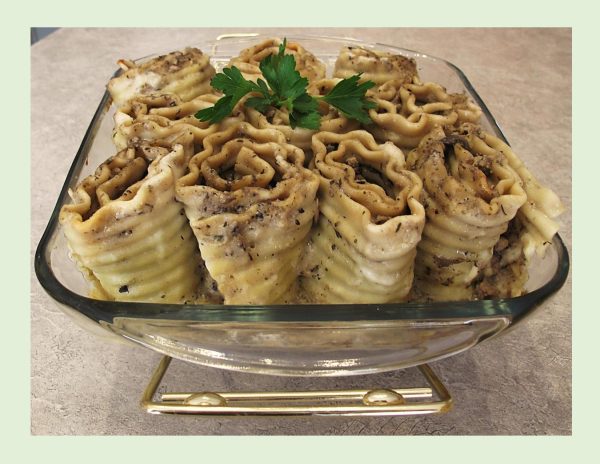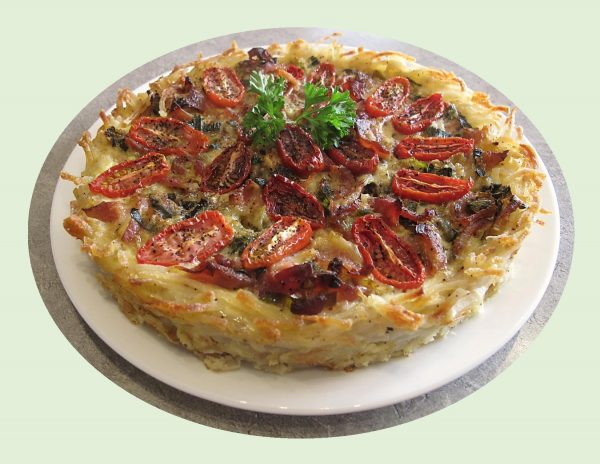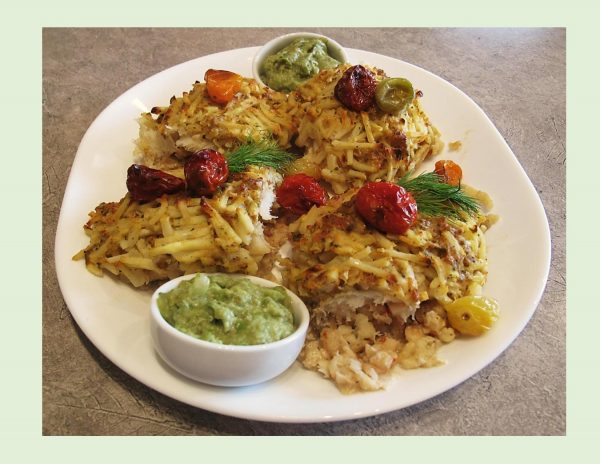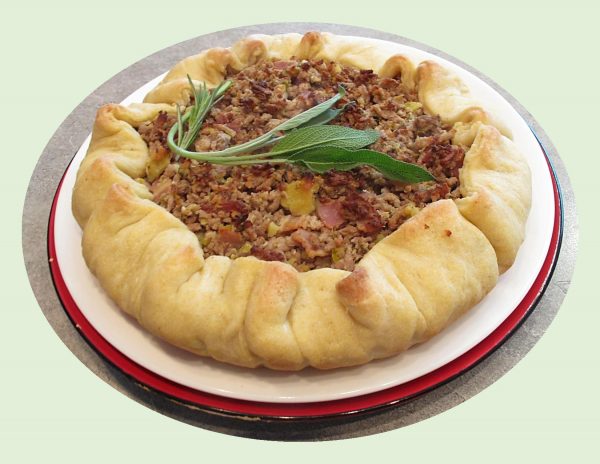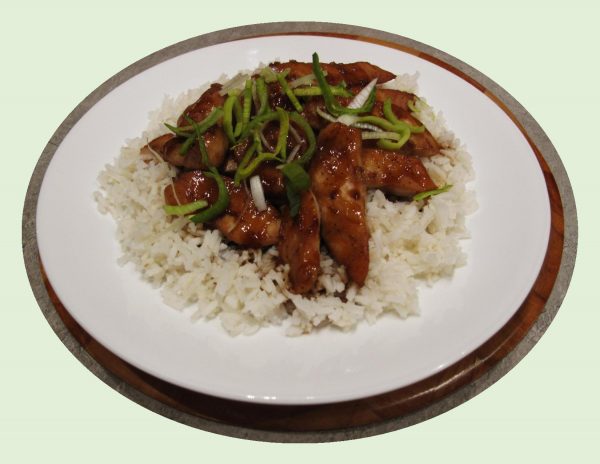
Lasagna noodles aren’t just for layering. Lasagna, the casserole, is without a doubt the most famous use for the unique lasagna pasta shape. The shape and length of lasagna noodles makes them perfect for rolling up with all manner of fillings.
When it comes to comfort food, we often think of a hearty, gooey pasta dish that will feed an army, lasagna comes to mind. The traditional lasagna you’re used to eating combines layers of tomato sauce, cheese, and meat. While the traditional portion of lasagna is wonderful, you know how filling it is. For the nights when you want to create easy, individual portions, try making some roll-ups.
The unique flat, wide shape of lasagna pasta makes an interesting canvas for culinary creations such as these chicken portobello mushroom roll-ups.
Print Recipe
Chicken Portobello Mushroom Roll-Ups
Votes: 1
Rating: 5
You:
Rate this recipe!
|
|
Votes: 1
Rating: 5
You:
Rate this recipe!
|
Instructions
Noodles
Cook noodles in boiling water & salt in a large pot for 10-12 minutes, stirring occasionally, until tender but firm. Drain. Rinse & drain well.
Chicken Mushroom Filling
Heat olive oil in a large skillet. Add chicken, onion & garlic. Scramble fry for about 7 minutes until onion is softened & chicken is no longer pink.
Add next 4 ingredients. cook, stirring often, until most of the liquid is evaporated. Sprinkle with flour. Stir; add broth & herbs. Heat & stir until boiling & thickened. Transfer to a medium bowl. Let stand for about 15 minutes until cool.
Spread 1/4 cup filling down length of each noodle. Roll up, jelly-roll style. Place rolls in a greased 8-inch pan
Parmesan Cheese Sauce
-
Stir milk into flour in a small saucepan until smooth. Heat & stir on medium for about 8 minutes until boiling & thickened. Add cheese, salt & basil paste. Stir. Pour over noodle rolls. Sprinkle shredded, smoked cheddar cheese over all.
Cover with greased foil & bake for 30 minutes. Remove foil & broil, uncovered (if you wish) for 10 minutes until bubbling & golden. Serve.

Quiche seems like a springtime dish, but the truth is its an ‘any season’ dish in my opinion. This version skips the pastry and is built on a crispy, grated, potato hash brown crust.
Hash browns can always be counted on to add heartiness and can be made several different ways, incorporating a variety of ingredients, including leftovers or whatever happens to be on hand in the fridge. Although hash browns are credited as being from the USA, there are similar dishes elsewhere that likely contributed towards the hash browns of today, and should be mentioned:
- Rösti of Switzerland – like a potato pancake
- Latkes of the Jewish folks – also like a potato pancake, but with eggs
- Tortilla de papas (or patatas) of Spain – like an omelet
The original ‘quiche Lorraine’ was an open pie with a filling consisting of an egg and cream custard with smoked bacon. It was only later that cheese was added to the quiche Lorraine. The bottom crust was originally made from bread dough, but that has long since evolved into numerous other ideas such as puff pastry or hash brown crusts.
Although quiche is now a classic dish of French cuisine, quiche actually originated in Germany, in the medieval kingdom of Lothringen, under German rule, and which the French later renamed Lorraine. The word ‘quiche’ is from the German ‘Kuchen’, meaning cake.
The specialty quiche from Lorraine features gruyere cheese, onion, bacon as its primary flavors. The nice thing is, quiche is something that anyone can make and can be served as an entrée, for lunch, breakfast, or an evening snack.
Print Recipe
Quiche Lorraine w/ Hash Brown Crust
Votes: 1
Rating: 5
You:
Rate this recipe!
|
|
Votes: 1
Rating: 5
You:
Rate this recipe!
|
Instructions
Potato Crust
-
Thaw & pat dry shredded hashbrowns on paper towels. Lightly toss with remaining crust ingredients. Press into the bottom & up the sides of a 9" quiche pan. Bake until golden brown around the edges, about 30 minutes. Reduce heat to 350 F.
Filling
In a skillet, cook bacon until crisp, 5-6 minutes; transfer to a paper towel lined plate & allow to cool.
Wipe out skillet & heat oil. Add leeks & garlic; cook covered , stirring occasionally, for 6 minutes or until tender.
In a bowl, whisk together eggs, sour cream, heavy cream & smoked paprika. Stir in bacon, leeks & cheese. Spoon mixture into hashbrown crust. Slightly press sliced tomatoes , cut side up, into quiche. Sprinkle with 1/4 tsp each salt & pepper.
Bake until set & golden brown about 20-25 minutes. Let rest for at least 10 minutes before serving.
Recipe Notes
- To cut out a few calories, I use a low fat milk instead of the heavy cream. It just requires a little longer cooking time but still tastes great.
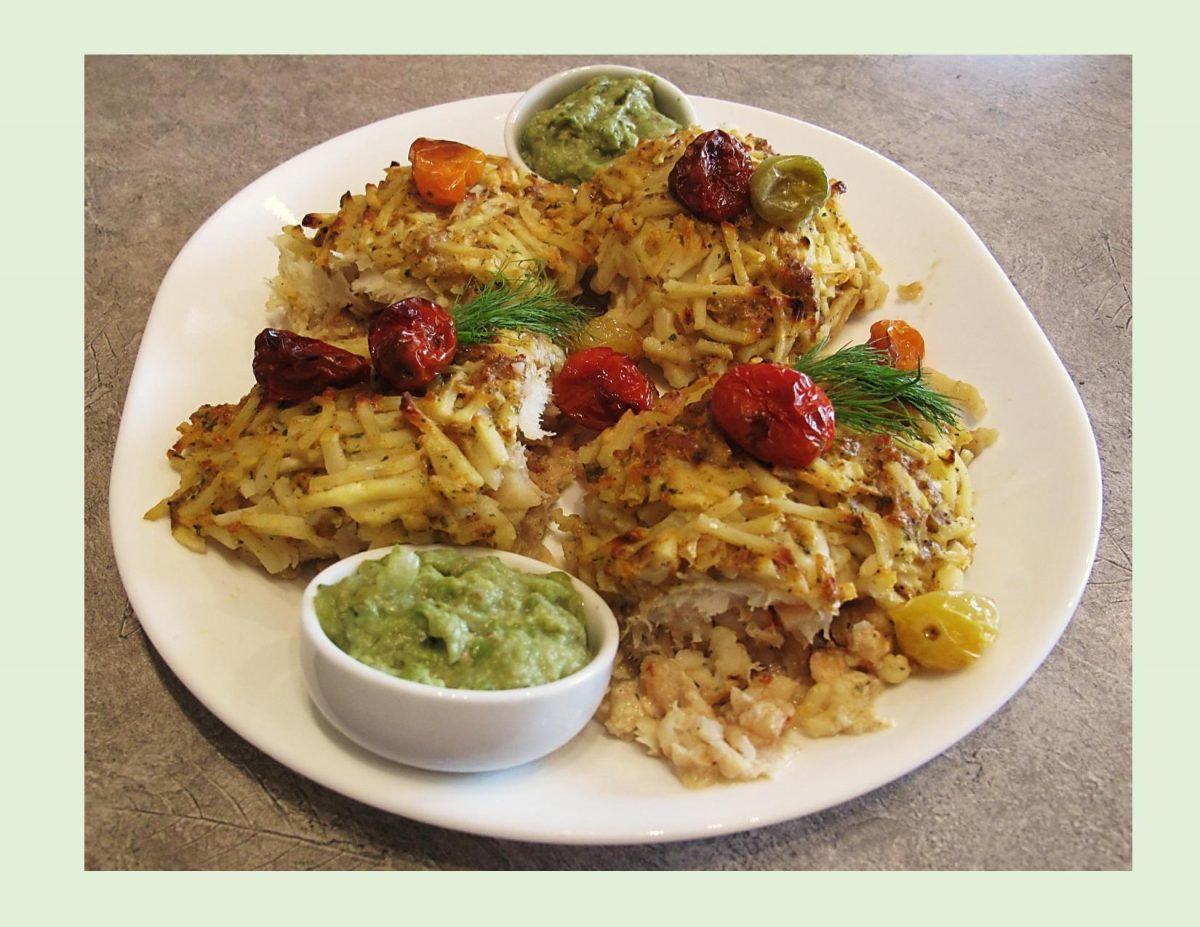
When you stuff fish, you expand the flavor profiles available with fish. It’s such a great way to make your fish dinner more interesting and flavorful. You can stuff a whole fish or wrap thin fillets around the stuffing and then bake or grill the fish as usual.
Whitefish is a freshwater fish that is commonly called Atlantic Cod, Halibut or Flounder. Whitefish, when cooked, are dry and compared to other fishes, the flesh of the whitefish is completely white.
Whitefish can be classified into different, unique species that can easily be identified according to their appearance and where they live.
These flaky white fish fillets are stuffed with a creamy shrimp filling and flavored with onion, garlic and spices. For something different I gave them a spicy hashbrown crust. This seafood dinner is just as tasty as it is eye appealing and definitely not dry.
Print Recipe
Shrimp Stuffed Whitefish w/ Hashbrown Crust
Votes: 1
Rating: 5
You:
Rate this recipe!
|
|
Votes: 1
Rating: 5
You:
Rate this recipe!
|
Instructions
Spicy Hashbrowns
Thaw shredded hashbrowns on a paper towel. In a bowl, place the flour, cheese, onion, garlic, coriander, smoked paprika, salt & pepper & egg. Add 'dried' shredded hashbrowns. Using a fork, mix everything until combined being careful not to break up the hashbrowns. Set aside until stuffed fish is ready to be coated with the mixture.
Stuffed Fish
In a saucepan, add olive oil & heat . Add onions until they begin to soften & caramelize a bit then add garlic. Add shrimp pieces, cream cheese, seasonings & chives; stir until well incorporated. Remove mixture from heat & allow to cool.
Lay out whitefish, remove all bones, skin & wash & dry thoroughly. Place fillets between two pieces of plastic wrap & pound gently to flatten a bit for easier rolling. Lay on work surface & divide shrimp mixture between the two fillets & spread until it is even.
-
Roll up each fillet with the seam side down in a greased baking dish. Spoon hashbrown mixture over stuffed fillets. Press down coating to ensures it adheres well to top & sides of each stuffed fillet.
Bake for about 45 minutes or until fish flakes easily. Cut each fillet in half to make four servings. Nice to serve with a few roasted cherry tomatoes & a side of guacamole.

Squash is one of those quintessential autumn foods that we have come to recognize. Even though it is considered a winter squash, acorn squash belongs to the same species as all summer squashes including zucchini and yellow crookneck squash. The main difference between the classifications is that summer squashes have soft skins and tender seeds and are fairly perishable, while the winter types have hard shells, fully formed seeds and are very suited to long storage.
For all their many splendored shapes and colors, squash is not something most of us crave, although they are an integral part of the cuisine in scattered points of the globe, such as South and Central America, the West Indies, India and Japan.
The acorn squash is similar in flavor to the butternut squash yet has a bit of a nutty taste to it as well. Resembling its name in shape, the acorn squash usually weigh between 1-2 pounds and generally grow between four and seven inches long.
Roasting them partially before stuffing makes the squash a lot more tender and easier to eat. I am always aware of the concept of ‘seasonal eating’. I was born in September, so I figure its totally natural to love fall food (& colors) such as squash, pumpkin, apples and cranberries.
The large cavity of acorn squash just begs to be filled. This recipe makes good use of all your thanksgiving ‘leftovers’, creating a whole new meal at the same time.
Print Recipe
Turkey & Stuffing Stuffed Squash
Votes: 1
Rating: 5
You:
Rate this recipe!
|
|
Votes: 1
Rating: 5
You:
Rate this recipe!
|
Instructions
Preheat oven to 400 F. Line a baking sheet with parchment paper.
Cut the squash in half & remove the seeds. Brush the flesh with olive oil & sprinkle with a little salt. Put the squash, cut side down onto the prepared baking sheet and roast for 40 minutes.
In a large skillet over medium heat add olive oil, onion; sprinkle with a pinch of salt. Allow the onion soften for about 3 minutes then add the minced garlic. Stir in the turkey, stuffing, cranberry sauce, & broth; mix well to combine.
Remove squash from oven & carefully fill each half with the filling. Lay a piece of foil over the squash and bake for about 20-25 minutes, until the squash is easily pierced with a fork.
Serve with extra cranberry sauce if desired.
Recipe Notes
- This is such a great way to use up that holiday turkey & stuffing in a whole new meal idea.

People who will happily eat chicken breast often turn their noses up at eating chicken thighs, possibly because they’re considered ‘dark meat’. Actually, chicken thighs tend to have a more intense flavor than breast and the meat stays juicy and tender during cooking.
It’s hard to overcook chicken thighs. If you use moist-heat cooking techniques like braising, chicken thighs will forgive you if you leave them in the oven too long. The worst that can happen is that if you go over your braising time, the meat will just fall off the bone.
Thighs have a good meat-to-bone ratio relative to other bone-in chicken parts, such as drumsticks and wings, which means they’re good value for money. Personally, give me a thigh any day, I love the dark meat. Strangely enough, for the many times I’ve made roulades, I’ve never thought to use chicken thighs.
Literally meaning ‘rolled’ in French, the word roulade signifies a lot of things. Traditionally, it’s a preparation reserved for boneless, skinless chicken breasts, stuffed with cheeses, vegetables, and other meats. This chicken thigh roulade for example is a great and easy way to jazz up some really simple ingredients.
Print Recipe
Stuffed Chicken Thigh Roulade
Votes: 1
Rating: 5
You:
Rate this recipe!
|
|
Votes: 1
Rating: 5
You:
Rate this recipe!
|
Instructions
In a skillet, sauté onion & mushrooms until tender; remove from heat & cool.
-
Arrange chicken thighs on a large sheet of foil paper, to form a large rectangle.
Mix shredded cheese & parsley into cooled mushroom/onion mixture. Sprinkle chicken with spices, salt & pepper.
Arrange stuffing along middle of the chicken rectangular, evenly distributing. Roll up, enclosing filling, using the foil to help you tighten the roll.
Carefully wrap roll with slices of bacon, securing with toothpicks if needed. Place foil with roulade centered on it on a deep baking sheet.
Bake 45 minutes. Chicken is done when juices run clear or internal temperature is 180 F. Allow to sit for 5 minutes, slice & serve.
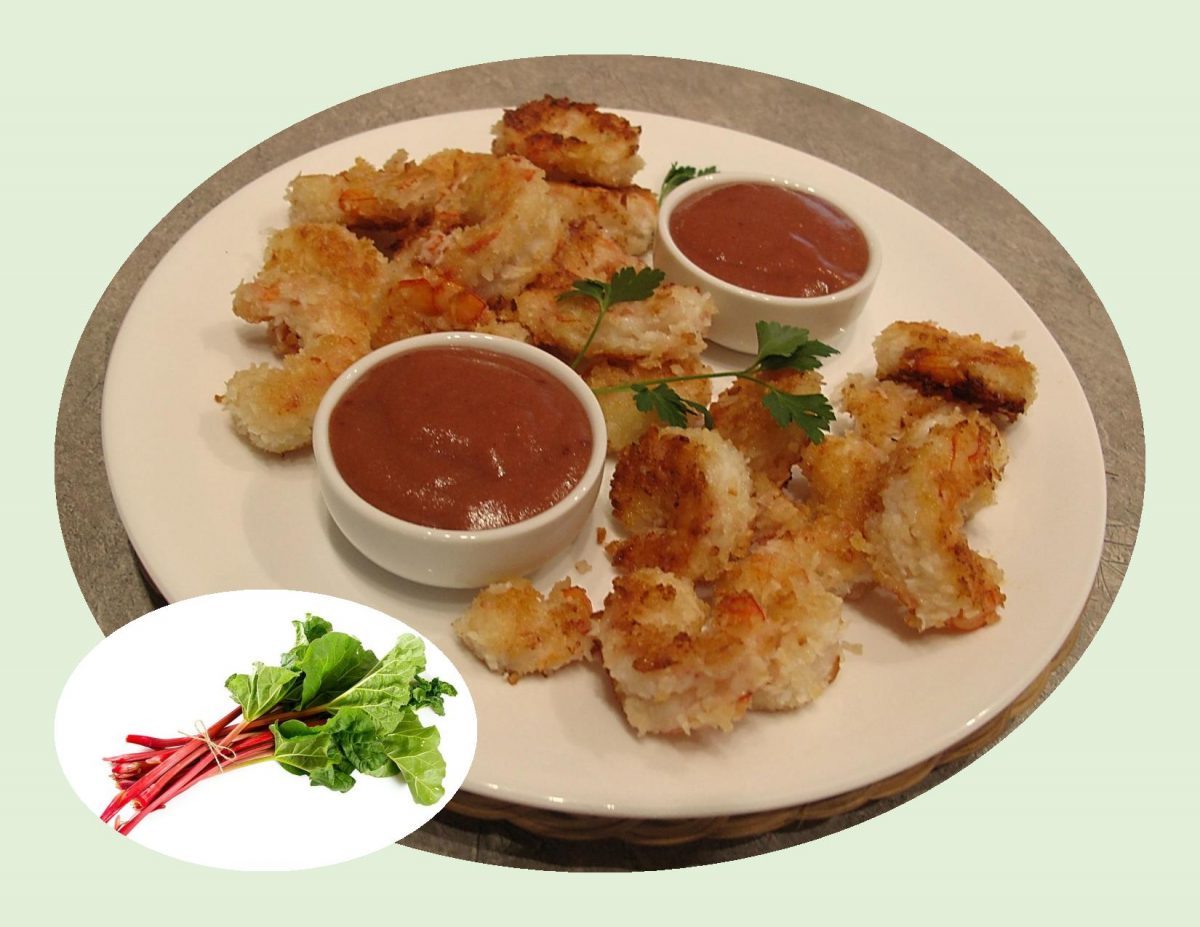
I have an obsession with rhubarb. I think because it is something I grew up with that makes it a nostalgic thing for me. Now, I’ll be the first to admit when it comes to rhubarb, my mind immediately jumps to desserts. But, over the years, I’m leaning more and more to using it in savory ways.
Tart and tangy, with just a little bit of sweet and spicy complexity, this rhubarb sauce is a unique and unexpected twist that is perfect served with coconut shrimp.
Brion & I love coconut shrimp which is really odd given that neither of us like coconut?? One of the nice things about this meal is that it takes minimal prep work but gives great results. We have tried many versions of sweet & spicy sauce with these shrimp and enjoyed them all. Today we’re experimenting with this savory rhubarb sauce. Should be good!
Print Recipe
Coconut Shrimp w/ Spicy Rhubarb Sauce
Votes: 1
Rating: 5
You:
Rate this recipe!
|
|
Votes: 1
Rating: 5
You:
Rate this recipe!
|
Instructions
Rhubarb Sauce
In a heavy saucepan, combine sugar, cider vinegar, ginger, cinnamon & cumin. Bring to a simmer over low heat, stirring until sugar dissolves. Add rhubarb & onion; increase heat slightly & cook until rhubarb is tender & mixture thickens, about 5-7 minutes. Cool then place in a food processor with Hot Red Pepper Jelly & process to a smooth sauce. Adjust the amount of red pepper jelly used to your liking. Set aside.
Coconut Shrimp
Using 3 separate bowls, place flour in the first, beaten egg in the second & panko/coconut mixture in the third.
Clean & devein shrimp. Dust them with flour then dip in the egg & lastly coat with panko/coconut mixture.
Preheat skillet over medium heat. Melt butter then add oil. Once the combo is heated, place the shrimp in the skillet & cook 2-3 minutes on each side until golden brown.
Place cooked shrimp on paper towel then serve with spicy rhubarb sauce. We enjoyed these shrimp as a main course with rice & some steamed broccoli.
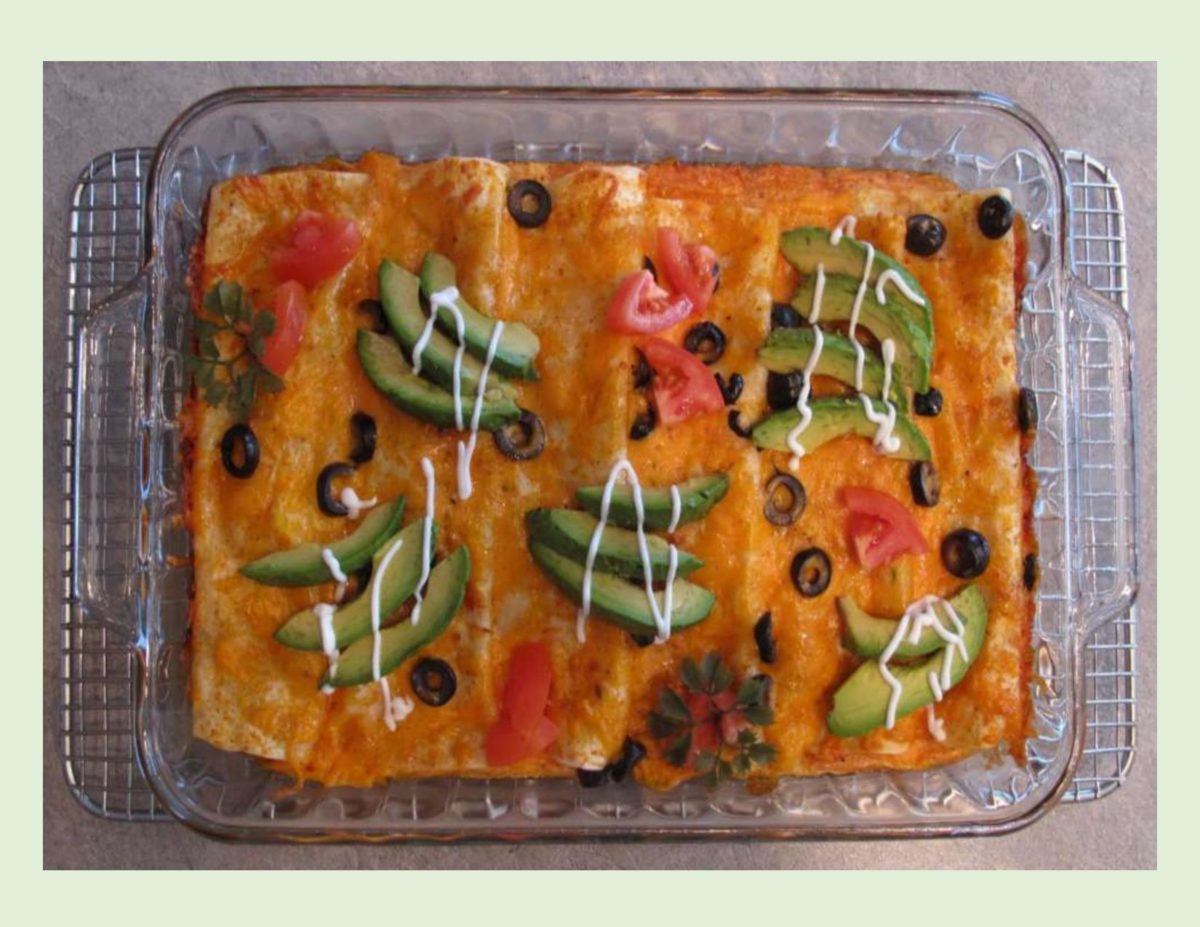
ENJOY FAMILY DAY!
First held in the province of Alberta in 1990, Family Day is supposed to reflect the values of family and home that were important to the pioneers who founded Alberta. It was to give workers the opportunity to spend more time with their families to help prevent the erosion of family values in Canadian society.
‘Family Day’ is a public holiday in 5 Canadian provinces, where it is a day off for the general population with schools and most businesses being closed. However, there are some provinces where the holiday is named slightly different and for different reasons.
Family Day was scheduled to fall between New Year’s Day and Good Friday in order to grant another day off between these celebrations as they are approximately three months apart.
This meal seems so appropriate for today. Just put breakfast in the oven, sit back, enjoy a coffee while it bakes. What a great way to start a ‘family day’ together!
Easy to make, a breakfast bake sits in the fridge for several hours or better yet, overnight, so when you pop it in the oven the following morning, all the work will have already been done. Plus, variations abound according to your tastes and favorite ingredients: substitute sausage for bacon (or use both). Forego all meats for a vegetarian version and substitute fresh spinach, roasted peppers, blanched broccoli. Of course, make-ahead breakfast bakes are genius and forgiving; it can use up multiple supplies in your kitchen, appeal to a variety of tastes and be absolutely delicious every time.
Print Recipe
Breakfast Enchilada Bake
Votes: 1
Rating: 5
You:
Rate this recipe!
Ingredients
Suggested Ingredients for Serving
Ingredients
Suggested Ingredients for Serving
|
Votes: 1
Rating: 5
You:
Rate this recipe!
|
Instructions
Heat olive oil in a large skillet over medium-high heat. Add green pepper, onion, garlic & all spices; cook 3-4 minutes or until softened.
Add chicken sausage & cook, stirring frequently, for another 5-6 minutes or until cooked through, breaking up the sausage into small pieces. Once fully cooked, stir in 3/4 cup of cheese.
Spray a 13 X 9-inch baking dish with cooking spray. On a work surface, lay out tortillas. Spoon about 1/4 cup of the sausage filling onto one side of the tortillas; roll each tightly. Place seam side down in the baking pan; sprinkle any extra sausage mixture on top.
In a bowl, whisk together eggs & half & half until completely combined. Pour over enchiladas & sprinkle with remaining 1 1/4 cups shredded cheese. Cover with foil & refrigerate overnight or at least 8 hours.
-
Remove chilled enchiladas from fridge, bake for 20 minutes covered, then remove foil & bake for an additional 15 minutes OR until center is set (eggs should no longer be jiggly) & cheese is lightly browned. If you prefer, leave the casserole covered & bake longer, before removing foil. Serve with your choice of toppings.

Crepes hail from the Brittany region of France and can be served either sweet or savory. While savory crepes are traditionally made with buckwheat flour, this particular recipe calls for wheat flour.
In North America, pancakes are a breakfast time staple best served with a large helping of syrup. However, crêpes — the humble French pancake’s ‘skinny‘ cousin — come in both sweet and savory form and can be enjoyed any time of the day. Crepes differ from typical North American pancakes in that they don’t contain a leavening agent causing the batter to rise, hence the flat outcome.
Around 2001, Emy Wada, a Japanese pastry chef who had studied in France, introduced a ‘mille crepe cake’ at her New York city bakery. The word mille means ‘a thousand‘, and while there really aren’t a thousand crepes, it might seem like it!
Crepes have become a favorite, sweet or savory delicacy all over the world. Made with just flour, sugar, salt, milk, eggs and butter, its simplicity is transcended by its versatility. A crepe can be used as a wrap or even stacked to create an elevated dessert or entrée.
Print Recipe
Herbed Seafood Crepe Cake
Votes: 2
Rating: 5
You:
Rate this recipe!
|
|
Votes: 2
Rating: 5
You:
Rate this recipe!
|
Instructions
Crepe Batter
In a bowl, whisk together dry ingredients. In another bowl, whisk together eggs & milk. Stir wet ingredients into dry ingredients then whisk in melted butter. Batter should be runny. Place in refrigerator while preparing the filling & sauce.
Filling
In a large skillet, sauté shrimp in olive oil for several minutes. Add zucchini, green onions & garlic; stir-fry for several minutes. Add mushrooms & sauté over medium-high heat until mushrooms release their liquid & soften, about 5-6 minutes. Add ginger, soy sauce & water; cover pan & cook on low heat for several minutes or until cooked. Set filling aside. Grate cheese.
Sauce
Sauté minced garlic & onion in butter. Add crushed, undrained tomatoes (& water, if using). Bring to a boil, reduce heat, simmer uncovered 15 minutes. Place in a food processor & puree. Reserve for serving with crepe cake.
Cooking & Assembly
Using a large nonstick skillet or crepe pan, add a small amount of butter over medium-high heat. Pour about 1/4 cup crepe batter onto skillet & form a circle with the bottom of cup or swirl it around the crepe pan so it flattens out. Cook 30 seconds on the first side or until it firms up, then carefully flip the crepe & cook for another 15-20 seconds. Repeat until all batter is used.
Place a crepe on a large serving plate, top with a portion of the shrimp filling & some of the grated cheese. Continue with remaining crepes, filling & cheese.
When ready to serve, place entire crepe cake in microwave & heat only until warm & cheese has melted. Slice & serve with warm tomato-onion sauce.

Tourtiere is a traditional French Canadian meal enjoyed by many people throughout Canada. There is no one correct filling; the meat depends on what is regionally available. In coastal areas, fish such as salmon is commonly used, whereas pork, beef and game are often included inland. The name derives from the vessel in which it was originally cooked, a tourtiere.
While the smell and flavor are unique, they aren’t difficult to like. The flavors are ultimately simple and comforting and you probably have most of the ingredients on hand often. This galette version works perfect in my favorite basic cornmeal pastry crust. Tourtiere can be made ahead and frozen, then baked off as needed.
Apart from making tourtiere in the traditional form, try using the filling in tourtiere meatballs, phyllo rolls, burgers, turnovers or chicken tourtiere tartlets. The filling recipe I’m posting today comes from a tiny little pamphlet I probably have had for 30 years from a meat packing company. It has been one that I have worked with the spices to suit our taste.
Print Recipe
Tourtiere Galette
Votes: 2
Rating: 5
You:
Rate this recipe!
|
|
Votes: 2
Rating: 5
You:
Rate this recipe!
|
Instructions
Cornmeal Pastry
In a small bowl, combine sour cream & ice water; set aside. In another bowl, whisk together flour, cornmeal, sugar & salt. Using a pastry blender or finger tips, cut in butter until mixture resembles BOTH coarse crumbs & small peas.
Sprinkle the cold sour cream mixture over dough, 1 Tbsp at a time, tossing with a fork to evenly distribute it. After you have added all the sour cream mixture, dough should be moist enough to stick together when pressed; if not, add additional cold water, 1 tsp at a time. DO NOT overwork dough.
Press dough into a disk shape & wrap in plastic wrap. Refrigerate for at least 2 hours.
Filling
Cut bacon into small pieces & fry over moderate heat until cooked but not crisp. Add pork, veal, onion & garlic; cook until meat is lightly browned. Add water & spices; reduce heat to simmer; cover pan & cook 45 minutes more. Combine meat with mashed potatoes; cool slightly.
Assembly/Baking
-
Remove pastry from refrigerator. On a large sheet of parchment paper, roll out pastry dough into a 12-inch circle. Transfer pastry (leaving it on the parchment paper) to a large deep pie dish. You should have about a 1 1/2-inch pastry overhang. Place tourtiere filling in the pastry shell then carefully fold pastry over it, making a pleated look. Brush pastry with egg wash.
Bake for about 30 minutes or until pastry is cooked & golden brown. Basically you are only baking the pastry since the filling is already cooked.
Recipe Notes
- Very often tourtiere recipes call for cinnamon, nutmeg & cloves. Neither Brion or I care for those spices in this recipe so its a personal choice you can add or leave out.

Despite the similarities in Asian cuisines, there are marked differences. Korean cuisine reflects a complex interaction of the natural environment and different cultural trends.
Korean food is bold, unique and well worth exploring. Strangely enough, it never has achieved the stature of Chinese food in North America and in recent years has been overtaken by Thai and Vietnamese.
Korean cuisine is largely based on meat, rice, vegetables and seafood. Dairy is fairly absent from the traditional diet.
The key ingredients needed in Korean cooking are garlic, fresh ginger, green onions, sesame seeds and oil, rice vinegar, brown sugar, soy sauce, dried red chilies and hoisin sauce. Each contributes to the oriental rule of five flavors: sweet, hot, sour, salty and bitter. Traditionally, Koreans also have tried to adhere to an arrangement of five colors in their meals: red, yellow, green, white and black.
Balancing flavor is both science and an art. The five taste elements build our overall perception of flavor. When each element is perfectly balanced, not only on the plate, but across the entire meal, its just amazing!
Print Recipe
Grilled Korean Chicken Tenders
Votes: 4
Rating: 5
You:
Rate this recipe!
|
|
Votes: 4
Rating: 5
You:
Rate this recipe!
|
Instructions
Place chicken tenders in a Ziploc bag. In a bowl, combine all marinade ingredients except green onion. Reserve 1/4 cup of the marinade & transfer the rest to the Ziploc bag with chicken. Refrigerate & marinate for at least an hour.
Over medium heat, grill the chicken tenders for 2-3 minutes or until they no longer stick to the grill. Turn the chicken, spoon reserved 1/4 cup marinade over tenders & grill an additional 2-3 minutes or until cooked through. Serve over rice & garnish with green onion.
